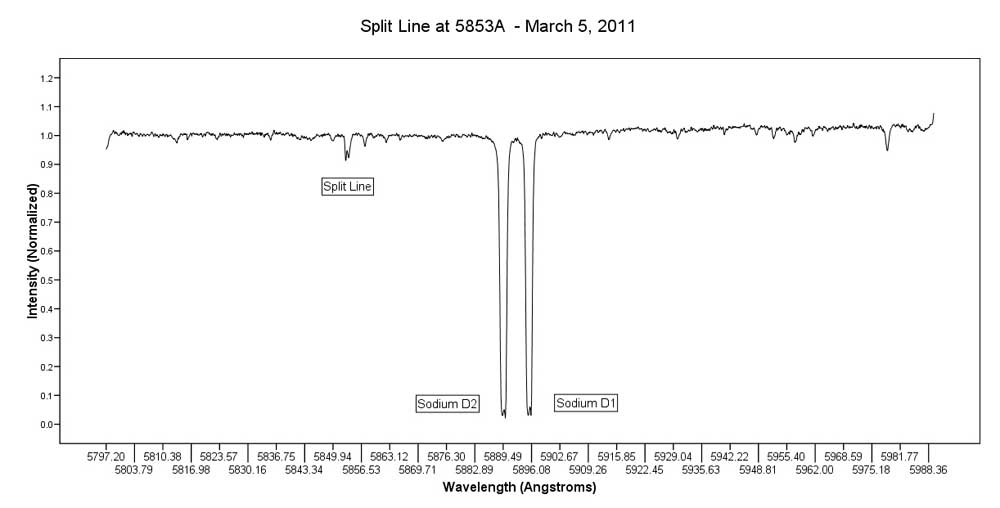
|
Spectroscopy (Click on images to enlarge) |
|
At
age nine I was attracted to astronomy, and collected
butterflies and moths. I still have an interest in
Lepidoptera, i.e., butterflies and moths, and run a
Lepidoptera discussion groups called DesertLeps. One
might think that astronomy and insects are incompatible
but in my discussion group I have a couple members that
worked (are retired) in astronomy at the professional
level, but also pursue an interest in Lepidoptera. I
have always been fascinated by the idea of getting
spectra of stars. Prior to the advent of the ccd camera,
stellar spectroscopy was pretty much in the domain of
the professionals. The ccd camera changed everything and
in December 2005 a startup French company, Shelyak
produced the first very affordable spectrograph for the
amateur, the LHIRES III. With a
resolution approaching R=18,000, it is now possible for
amateurs to make scientific contributions. |
 |
| Some of the information I have had published
that might be of interest is the following: 1. The Fun of Processing a Stellar Spectrum – the HARD WAY 2. Spectroscopic Results From Blue Hills Observatory of the 2009–2011 Eclipse of e Aurigae 3. Computing a Continuum and Equivalent Width for a Stellar Spectrum 4. High Resolution Spectroscopy for the Amateur: Experiences with the LHIRES III Spectrograph |
| For anyone interested in spectroscopy, or any
other aspect of astronomy, a good organization to join is
the Society for Astronomical
Sciences, or SAS., Initially, it was IAPPP, the
International Amateur Professional Photoelectric Photometry
society, but morphed into SAS. It holds annual symposiums
that used to be held in the city of Big Bear Lake in the San
Bernardino Mountains, California. It was always held three
days before RTMC (the Riverside Telescope Maker's
Conference). RTMC was held about 10 miles east of Big Bear
Lake. The two conferences taking place so close to each
other made for a fantastic astronomy week: first attending
SAS and then driving the 10 miles to RTMC which was always
very interesting and a place to meet like minded
astronomers. However, after having had conferences for about
44 years, RTMC closed in 2019. As a result, SAS now holds
their symposiums in Ontario, California. |
| Home Page |